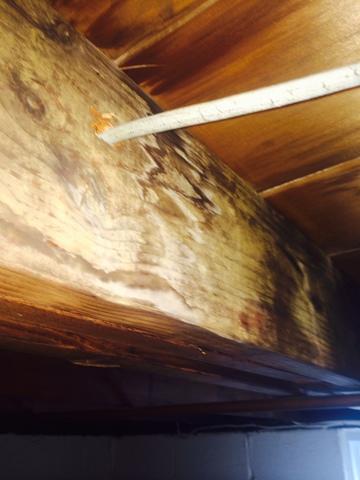Old Building Materials Causes Mold in Hamilton, NJ
Challenge
The heavy rains of October bought an unwanted and familiar smell to this new client’s basement. So, this client wanted to find out where this smell was coming from and if there was anything that we could do about it. She was also was concerned about a white chalky substance that was forming on her basement wall and making the paint on the wall bubble.
We inspected the entire basement and determined that this white chalky substance was efflorescence. Efflorescence forms from water pressure on the home and is forced through the porous wall. Like most homes that were built in the ’70s, this foundation was constructed with a hollow block foundation. While the hollow block is a cheaper way of constructing a foundation, it leads to other problems down the line. Efflorescence is not mold, but the two usually come as a package.
This led our inspection into a more thorough one, inspecting joist beams and the subfloor. Needless to say, we found mold on the painted hollow block, the joist beams, and the subfloor. This would explain the smell!! This was not a big water intrusion problem, their problem was construction material related, as explained above. The recipe: groundwater pressure on the foundation forced water vapor through the hollow block, the vapor moved upward to the beams and formed mold, and also formed on the painted walls.
Solution
For treatment, we applied our EPA-registered antimicrobial solution called Mold Abatement Polymer Solution 1, or MAPS 1, to the entire basement. This product attacks mold on a cellular level and kills it instantly. We then used our mold stain remover, scrubbed away all the excess mold staining, and then applied our patented sealant MAPS 2. This application encapsulates the surface mold is growing on and renders it harmless and non-allergenic. MAPS 2 is also moisture-sensitive and will reactivate whenever it gets wet to prevent future mold growth.







